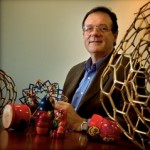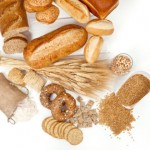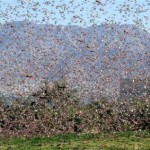How does breast cancer start? Capturing and releasing gases with smart crystals? Giving malaria a kick in the gut L’Oréal Australia For Women in Science Fellows announced The 2010 L’Oréal Australia For Women in Science Fellows are (click on links to see full citation, videos and photos): Marie-Liesse Asselin-Labat, Walter and Eliza Hall Institute of […]
Eureka for Barnard’s nanoscience
Congratulations to Amanda Barnard, winner of the 2010 Eureka Prize for Scientific Research for her work on predicting properties of nanoparticles in sunscreens. [Read more…] about Eureka for Barnard’s nanoscience
2010 Fellowship update
The 2010 L’Oréal Australia For Women In Science Fellowships will be announced on Tuesday, 24 August at the Melbourne Museum. On Wednesday 25 August, 140 students will meet the 2010 Fellows at a schools forum at the Walter and Eliza Institute for Medical Research. The forum is fully subscribed. We are now briefing the media on embargo. […]
Thirty stories for thirty years
A special event at the Shanghai World Expo has marked the 30th anniversary of the official partnership between Australia and China in science.
During the past three decades Australian and Chinese researchers have worked together on projects to reduce child mortality rates, treat eye and skin disease using lasers and captured solar energy.
We produced a commemorative book for DIISR showcasing thirty of these collaborations. [Read more…] about Thirty stories for thirty years
Bacteria munch up alumina impurities
Previously unknown species of naturally-occurring bacteria have the potential to save the alumina and aluminium industries millions of dollars while helping to reduce their impact on the environment, microbiologist Naomi McSweeney has found in a collaborative project between Alcoa of Australia, CSIRO and the University of Western Australia.
The bacteria can successfully break down and remove sodium oxalate, an organic impurity produced during the refining of low-grade bauxite into alumina. The work is being presented for the first time in public through Fresh Science, a national competition for early-career scientists. Naomi was one of 16 winners from across Australia.
Ultrasound puts water back in the Murray Darling…
…by putting the squeeze on mining waste
You may not be able to squeeze blood out of a stone but, by applying the right amount of ultrasound during processing, Jianhua (Jason) Du and colleagues from the Cooperative Research Centre for Contamination Assessment and Remediation of the Environment (CRC CARE) have been able to squeeze a considerable amount of fresh water from mining waste.

Honeycomb-like structure which retains significant amount of water in tailings before ultrasonic treatment. (Photo: Jason Du)
As well as conserving water the technique reduces the waste bulk, which could also save mining companies millions of dollars in operational costs and help postpone significant capital expenditure, Jason says. Jason is one of sixteen winners of the national 2010 Fresh Science program – highlighting the work of leading young scientists.
[Read more…] about Ultrasound puts water back in the Murray Darling…
Eight for apples, 46 for muffins
 What does food do – time to move beyond the glycaemic index
What does food do – time to move beyond the glycaemic index
It’s time to get smarter about food labelling according to Dr John Monro, speaking at the international chemistry conference in Melbourne this week.
“We need to know not just what is in the food, but what the food is going to do in our bodies,” he says. John is a researcher with the New Zealand Institute for Plant and Food Research.
“And we need easy to follow guides that make sense when we’re pushing our trolleys around the supermarket.”
Spinning the world clean

“We’re working at getting rid of the round-bottom glass in the laboratory, and the array of tanks and pipes in chemical plants.” [Read more…] about Spinning the world clean
As good as an atomic clock
Australian researchers have invented a new clock that will bring atomic accuracy to your desk.
Skype, online games, air traffic control, smart energy grids – all rely on accurate timing across the internet. But our present computers aren’t accurate enough. They can synchronise with an atomic clock over the internet. But even tiny delays across the network introduce errors – your video conversation gets out of sync, you lose your online game, or the electricity grid wastes power.
University of Melbourne engineer Julien Ridoux and his colleague Darryl Veitch have two solutions to the problem – install an atomic clock in your computer for $50,000, or use their new, free, software clock accurate to within a millionth of a second.
Known as RADclock, their new software has been so successful it is now being tested across Australia with the cooperation of the National Measurement Institute (NMI), the Institute for a Broadband-Enabled Society and the Australian Academic and Research Network (AARNet). The work is being presented for the first time in public through Fresh Science, a communication boot camp for early-career scientists held at the Melbourne Museum. Julien was one of 16 winners from across Australia.
Worst locust plague in 30 years this summer
Victorian farmers are in a phony war right now – but in spring the invasion will come. We’re likely to see the worst locust plague for 30 years. David Hunter will tell the conference how plagues occur and what can be done to reduce their impact. [Read more…] about Worst locust plague in 30 years this summer





